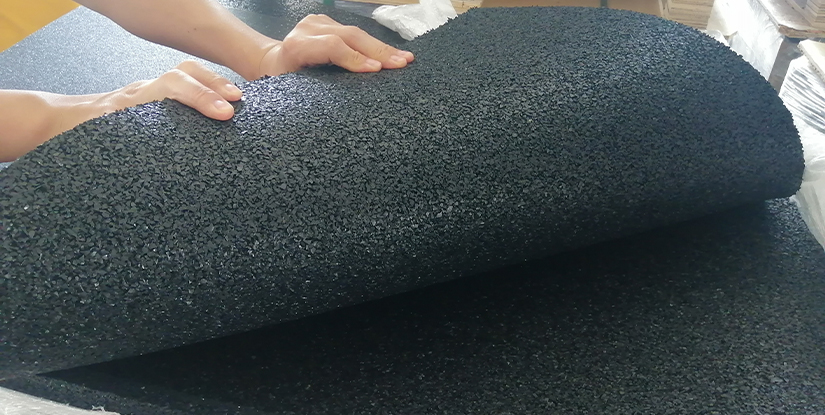Puzzle Exercise Mat: Professional Guide to Selection & Care

Overview of Puzzle Exercise Mats
Puzzle exercise mats are modular interlocking flooring solutions designed for fitness environments, home gyms, commercial studios, and multi-purpose activity areas. Their versatility, impact absorption, and ease of installation have made them a preferred choice for users seeking a durable and adaptable surface that protects both the floor and the athlete.
Key Benefits
- Shock absorption: High-quality foam or rubber cores reduce impact on joints during dynamic movements and weight training.
- Modularity: Interlocking edges allow customized coverage, quick assembly, disassembly, and reconfiguration.
- Floor protection: Prevents damage from dropped weights, equipment movement, and repetitive impact.
- Noise reduction: Materials and thickness options significantly decrease noise transmission to lower levels or neighboring spaces.
- Hygiene and maintenance: Closed-cell constructions resist moisture and are easier to clean than textile surfaces.
Construction Materials and Their Properties
Puzzle mats are manufactured from several materials, each with specific characteristics:
- EVA foam: Lightweight, cost-effective, good for general exercise and children's play areas; limited durability under heavy equipment.
- Cross-linked polyethylene (XLPE): Enhanced resilience and longevity; superior compression set resistance and better for frequent use.
- Rubber (SBR or recycled rubber): Excellent durability, high impact absorption, ideal for free-weight zones and commercial gyms; heavier and pricier.
- Vinyl-coated foam: Provides a cleanable surface with a durable top layer, useful where hygiene and ease of cleaning are priorities.
Thickness, Density, and Performance
Choosing correct thickness and density is crucial to match intended use:
- 6–10 mm: Appropriate for yoga, stretching, and light aerobic work; minimal floor protection.
- 10–20 mm: General fitness classes, bodyweight training; balanced protection and stability.
- 20–30+ mm: Recommended for weight training, kettlebells, and high-impact activities; maximizes shock absorption and floor protection.
- Density: Higher density improves load distribution and longevity; for heavy equipment or commercial use prioritize denser compounds.
Surface Texture and Traction
Surface finish influences safety and user comfort. A non-slip textured surface enhances grip while minimizing slip risk when sweating. Closed-cell surfaces resist moisture ingress; perforated or contoured finishes can offer additional grip and aesthetic options. For cardio and high-sweat environments, choose materials that balance traction with easy cleaning.
Installation and Layout Best Practices
Installing puzzle mats is generally straightforward, but following best practices ensures optimal performance:
- Prepare the subfloor: Clean, dry, and level surfaces extend mat lifespan and prevent uneven wear.
- Allow acclimation: Let mats acclimate to room temperature to minimize expansion or contraction after installation.
- Plan layout: Begin from a corner or central anchor point and work outward; align grain or pattern consistently.
- Edge finishing: Use ramp edges or trim to create smooth transitions and prevent tripping hazards.
- Securement: For permanent installations consider adhesive or mechanical fastening where allowed; for temporary setups, interlock alone is often sufficient.
Cleaning and Maintenance
Routine care preserves performance and hygiene:
- Daily: Sweep or vacuum to remove dust and debris.
- Weekly: Damp mop with a neutral pH cleaner; avoid harsh solvents that degrade foam or rubber.
- Spot cleaning: Wipe spills immediately to prevent staining or odor buildup.
- Deep maintenance: Periodically lift sections to inspect subfloor and ensure interlocks remain intact; replace worn tiles promptly.
Safety Considerations
Safety is paramount when selecting a puzzle exercise mat. Evaluate:
- Compression set resistance: Ensures the mat recovers after repeated loads.
- Fire rating and certifications: Check local codes and material certifications for commercial use.
- Toxicity and VOCs: Low-VOC and phthalate-free options reduce indoor air quality concerns.
- Edge and transition safety: Use tapered edges and secure seams to prevent trip hazards.
Selecting the Right Puzzle Mat
Match product attributes to the intended use-case. For home fitness select-versatile EVA or XLPE with moderate thickness; for commercial gyms prioritize rubber or dense XLPE tiles with higher thickness and proven compression resistance. Budget, noise control, and maintenance requirements will further inform choice.
Common Use Cases
- Home gyms: Comfortable training surface for cardio, strength, and functional training.
- Commercial facilities: Durable zones for free weights, group classes, and multipurpose studios.
- Kids’ activity areas: Soft, safe play surfaces with easy assembly and cleaning.
- Temporary event floors: Fast deployment for expos, pop-up gyms, and demonstrations.
Cost Considerations and Lifespan
Upfront cost correlates with material quality and density. Rubber and high-density XLPE cost more but last longer under heavy use, reducing life-cycle cost. EVA is economical for light-duty applications but may show compression and wear sooner. Expect commercial-grade installations to last five to ten years with proper maintenance.
Sustainability and End-of-Life
Consider recycled rubber options and manufacturers offering take-back or recycling programs. Material selection affects recyclability: post-consumer rubber and some thermoplastic formulations are easier to reclaim than mixed-composite tiles.
FAQs
- Q: How thick should a puzzle mat be for a home gym? A: 10–20 mm is suitable for most home workouts.
- Q: Can puzzle mats handle dropped weights? A: Use 20 mm+ high-density rubber or XLPE for heavy drops.
- Q: Are puzzle mats waterproof? A: Closed-cell materials resist water but seams can allow moisture ingress.
- Q: How do I clean sweat and odors? A: Damp-mop with neutral cleaner and ventilate; deep clean periodically.
- Q: Can I install puzzle mats over concrete? A: Yes, provided the concrete is clean, dry, and level.
- Q: Do puzzle mats provide noise reduction? A: Yes; thicker, denser mats reduce impact and airborne noise.
- Q: How long do puzzle mats last? A: Lifespan ranges from 2–10 years depending on material and usage.
- Q: Are recycled rubber tiles a good choice? A: They are durable and sustainable, ideal for heavy-duty zones.
- Q: Can I use puzzle mats outdoors? A: Some materials tolerate outdoor use, but UV and temperature can degrade foam; choose UV-stable rubber or vinyl surfaces.

